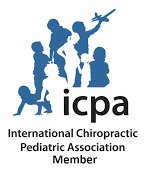Did you know that there are over 100 different types of chiropractic adjustments used around the world? While there are a diverse range of adjustments, the approach towards chiropractic usually fits in the traditional or NeuroStructural category. Traditional chiropractic focuses on providing symptom relief and management for patients by temporarily reducing their pain, inflammation, and muscle spasms or tension. This is an excellent way to find quick relief, but fails to address the underlying conditions causing those symptoms. NeuroStructural chiropractic focuses on correcting the NeuroStructural Shift, which helps the spine and nerves regain its normal structure and function. Let’s take a closer look at the differences between NeuroStructural and traditional chiropractic.
Traditional Chiropractic
Traditional chiropractic is a popular approach to health and wellness for good reason. Specifically, traditional chiropractors focus on reducing pain, muscle spasms, and discomfort. These chiropractors also help patients improve their range of motion and flexibility. While these goals are beneficial, they only provide short-term, temporary relief. Think of the spine as the foundation for your body, like a foundation is for a building. When the foundation is no longer level, this will lead to ongoing repairs to the walls, floors, doors, and windows. Eventually, the unlevel foundation will need to be completely redone, which will be expensive and time-consuming. Instead of doing temporary, ongoing repairs, wouldn’t it be better to address the cause of these repairs from the start? Indeed, this same mindset can be applied to your spine health too.
NeuroStructural Chiropractic
NeuroStructural chiropractic takes a different approach to health and wellness by identifying and treating NeuroStructural dysfunctions. A NeuroStructural dysfunction is when the spine’s discs shift from their normal position, which negatively affects the rest of the body. This results in various symptoms or secondary conditions, including:
- Anxiety
- Back pain
- Decreased sports performance
- Depression
- Dizziness
- Headaches
- Hip pain
- Joint stiffness and pain
- Lack of focus
- Low energy levels
- Neck pain
- Sleep issues
- Stress
Instead of treating these symptoms, chiropractors identify and treat the underlying NeuroStructural dysfunctions. In turn, this allows the body to achieve a better state of function and healing. As a result, patients can enjoy a long-term reduction in their symptoms, which means less time and money being invested into temporarily treating symptoms with traditional chiropractic care. Indeed, NeuroStructural chiropractic helps patients obtain lasting health and wellness for their whole bodies. Additionally, after a patient’s spine function has been restored back to normal, the chiropractor will provide support and guidance on how to maintain the patient’s spine health.
We hope you enjoyed this week’s article discussing how NeuroStructural chiropractic differs from traditional chiropractic. Like always, it’s best to discuss your health and wellness options with your primary doctor. You may discover that you prefer one type of chiropractic care more than the other, which is normal. If you are tired of treating your pain symptoms on a frequent basis, consider the proven benefits of NeuroStructural chiropractic care today. Contact Keystone Chiropractic today, the best chiropractors in Plano, TX.





